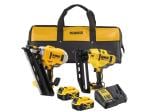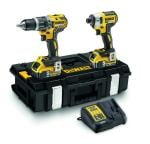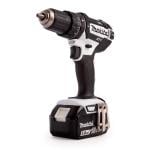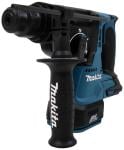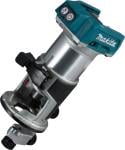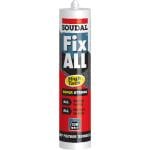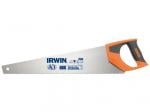Essential Tools For Carpenters
Carpentry is a skilled trade that requires the use of various tools to shape and construct wood materials. Whether you are a professional carpenter or a DIY enthusiast, having the right tools at your disposal is essential for achieving precise and high-quality results. In this article, we will explore the essential tools that every carpenter should have in their toolbox.
Introduction: The Importance of Having the Right Tools
In carpentry, having the right tools is crucial for a successful project. The right tools make the job easier and more efficient and ensure that the final result meets the desired specifications. Investing in high-quality tools is a wise decision for any carpenter, as they can significantly improve the accuracy and craftsmanship of their work.
Measuring and Marking Tools
Accurate measurements and markings are fundamental in carpentry. The following tools are essential for this purpose:
Tape Measure
A tape measure is a flexible ruler used for measuring distances and lengths. It is a versatile tool that carpenters use for a wide range of applications, from measuring the dimensions of a room to determining the length of wood pieces.
Combination Square
A combination square is a multi-purpose tool that consists of a ruler and a square head. Carpenters use it for marking and measuring angles, checking the accuracy of corners, and transferring measurements.
Chalk Line
A chalk line is a tool used to create straight lines on surfaces. It consists of a string coated with chalk powder, which is stretched taut and then snapped to leave a chalk mark.
Cutting Tools
Cutting tools are essential for shaping and resizing wood materials. The following tools are commonly used by carpenters:
Hand Saw
A hand saw is a versatile tool used for cutting wood manually. It is available in various types, such as crosscut saws for cutting across the grain and rip saws for cutting along the grain.
Circular Saw
A circular saw is a power tool that uses a toothed blade to make straight cuts in wood. It is portable and highly efficient, making it a preferred tool for carpenters working on large projects.
Jigsaw
A jigsaw is a versatile power tool that uses a reciprocating blade to make curved or intricate cuts in wood. It is commonly used for cutting shapes and patterns.
Shaping and Joining Tools
Shaping and joining tools are crucial for creating intricate designs and assembling wood pieces. The following tools are commonly used in carpentry:
Chisel
A chisel is a sharp-edged tool used for carving, shaping, and cutting wood. It comes in various sizes and shapes, allowing carpenters to create precise and detailed cuts.
Router
A router is a power tool used for hollowing out an area or shaping the edges of wood. It is commonly used for creating decorative edges and joints.
Wood Planer
A wood planer is a tool used for smoothing and flattening wood surfaces. It helps in achieving precise thickness and removing any imperfections.
Fastening Tools
Fastening tools are essential for securely joining wood pieces together. The following tools are commonly used for this purpose:
Hammer
A hammer is a basic tool used for driving nails and removing them when necessary. It is available in various sizes and weights to accommodate different carpentry tasks.
Screwdriver
A screwdriver is a tool used for inserting and removing screws. It comes in different types, including flathead and Phillips head, to fit different screw designs.
Nail Gun
A nail gun is a power tool used for quickly and efficiently driving nails into wood. It is commonly used in large-scale carpentry projects to save time and effort.
Finishing Tools
Finishing tools are essential for achieving smooth and polished surfaces. The following tools are commonly used in carpentry for finishing touches:
Sandpaper
Sandpaper is an abrasive material used for smoothing wood surfaces and removing any roughness or imperfections. It comes in various grits, allowing carpenters to achieve different levels of smoothness.
Wood Stain and Varnish
Wood stain and varnish are used to enhance the appearance of wood and provide protection against moisture and wear. They come in a variety of colours and finishes, allowing carpenters to customize the final look of their projects.
Paintbrushes
Paintbrushes are used for applying paint or finishes to wood surfaces. They come in different sizes and types, such as bristle brushes for oil-based paints and foam brushes for water-based paints.
Safety Equipment
Safety should always be a priority in carpentry. The following safety equipment is essential for protecting oneself while working with tools:
Safety Glasses
Safety glasses protect the eyes from flying debris and prevent potential eye injuries.
Dust Mask
A dust mask helps filter out dust and particles, protecting the respiratory system from potential harm.
Ear Protection
Ear protection, such as earplugs or earmuffs, is necessary to reduce exposure to loud noises generated by power tools.
Conclusion
In conclusion, having the right tools is crucial for carpenters to achieve accurate and high-quality results. From measuring and marking tools to cutting, shaping, and joining tools, each tool plays a specific role in the carpentry process. Additionally, the use of fastening tools, finishing tools, and safety equipment ensures the overall efficiency, aesthetics, and well-being of the carpenter. By investing in these essential tools, carpenters can enhance their craftsmanship and deliver exceptional woodworking projects.
FAQs
Q: Where can I purchase carpentry tools?
A: Carpentry tools can be purchased at hardware stores, home improvement centres, and online retailers. It is recommended to choose reputable brands known for their quality tools.
Q: Can I use power tools as a beginner carpenter?
A: Power tools can be used by beginners, but it is important to learn proper safety precautions and techniques before operating them. Starting with basic hand tools is a good way to build foundational skills.
Q: How often should I sharpen my chisels and saw blades?
A: The frequency of sharpening depends on the intensity of use. As a general guideline, chisels and saw blades should be sharpened when they start to show signs of dullness or decreased cutting efficiency.
Q: What type of wood stain should I use for outdoor projects?
A: For outdoor projects, it is recommended to use an exterior wood stain that provides protection against moisture, UV rays, and other outdoor elements. Consult the manufacturer's instructions for the specific product.
Q: Can I repair damaged wood surfaces?
A: Yes, damaged wood surfaces can often be repaired using wood fillers, epoxy, or by replacing the damaged sections. The approach will depend on the extent of the damage and the desired outcome.


